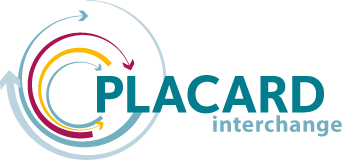From January 27–29, I took part in the UNISDR Science and Technology Conference. Organised by UNISDR, it was the major event to activate implementation of the SENDAI Framework. More than 1,000 participants from the science and technology communities, policymakers, practitioners, and researchers from all geographical regions at local, national, regional, and international levels got together to support the road-map, and share and exchange knowledge about DRR. Mario and I presented our poster on the PLACARD project, and with several actors from the DRR community discussed their links and collaboration with climate change adaptation (CCA) experts: the links appear to still be very vague and abstract.
Even though climate change was one of the key issues and challenges at the conference, especially after the Paris Agreement, and with CCA being mentioned in several presentations and side-events, there were few representatives from the CCA community – not from Europe, and not from any other leading institution in CCA. Climate change is seen as a major challenge in terms of future risks, and thus the available science needs to be put forward as a basis for decision-makers – but no climate scientists, climate impact researchers or climate adaptation specialists were involved.
It seems that the DRR communities have their events related to the Sendai Framework, DRR Platforms and others, and CCA communities have their events in terms of UNFCCC, Adaptation Futures and others. However, both reflect on the third global process, namely the Sustainable Development Goals and how all these three processes can be aligned at a national level.
Both communities have similar challenges, such as: scientific knowledge not reaching the policymakers to the extent needed; aiming at a holistic approach; bringing fragmented knowledge together; and aiming at a more strategic collaboration at different governance levels. Challenges are obvious in terms of data, data gaps and data sharing. Both fields are cross-cutting issues, which need to be mainstreamed into many other policies and processes on diverse levels (national, regional and especially local). Reaching the policy agenda is the aim of both communities, thus understanding the pressures policymakers are under is key for both, seizing the right windows of opportunity to include scientific and technological knowledge and measures into policymaking and practice.
Since both fields aim to reduce vulnerability to hazards, and not the hazards themselves – hazards are an unavoidable natural process – the overlaps are obvious in terms of early warnings for floods, storms, heatwaves, droughts etc. as well as in terms of preparation/preparedness for the likelihood of an event. From my point of view, the closest area of collaboration should be in the area of disaster resilience in a changing climate, or focusing on climate risk management.
Especially from my point of view, the three UN Frameworks now need to be integrated at the national level, as well as implemented at regional and local levels in order to create a resilient and well-prepared society capable of withstanding future extreme events. Thus we live in an exciting phase, ready to seize the opportunities for a new era of collaboration.

